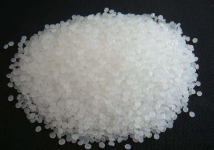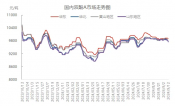read: 810 time:2025-07-07 16:54:26 from:化易天下
Pyridine, a six-membered aromatic ring containing one nitrogen atom, is a key compound in organic chemistry. One of the fundamental questions regarding its chemical behavior is why pyridine undergoes electrophilic substitution at the 3 position. Understanding this requires a deeper analysis of pyridine's structure, electronic distribution, and reaction mechanism.
Pyridine's structure resembles that of benzene, but with one crucial difference: the replacement of a CH group by a nitrogen atom. This nitrogen is more electronegative than carbon, which influences the electron density distribution across the ring. The nitrogen atom in pyridine withdraws electron density from the ring, particularly affecting the positions adjacent to it (2 and 4 positions). This electron withdrawal results in a lower electron density at these positions, making them less reactive toward electrophiles.
Electrophilic substitution reactions typically occur where the electron density is highest, as this facilitates the attack of the electron-poor electrophile. In pyridine, due to the electron-withdrawing nature of the nitrogen atom, the 2 and 4 positions (also called ortho and para positions) are less electron-rich. Conversely, the 3 position (meta position) is relatively less affected by the electron withdrawal from nitrogen. As a result, the 3 position retains a higher electron density compared to the 2 and 4 positions, making it more favorable for electrophilic attack.
Another factor that explains why pyridine undergoes electrophilic substitution at the 3 position is the stability of the intermediates formed during the reaction. When an electrophile attacks pyridine at the 3 position, the resulting intermediate is more stable than if the attack occurred at the 2 or 4 positions. This stability arises because the positive charge developed in the intermediate can be delocalized across the ring without significantly involving the nitrogen atom. In contrast, if substitution occurs at the 2 or 4 positions, the positive charge would be closer to the nitrogen atom, which destabilizes the intermediate due to the electron-withdrawing nature of nitrogen.
The reaction conditions also play a role in determining why pyridine undergoes electrophilic substitution at the 3 position. Pyridine is less reactive toward electrophiles compared to benzene, requiring more vigorous conditions or stronger electrophiles for substitution reactions to occur. Under such conditions, the factors discussed above—electron density and intermediate stability—become even more critical in determining the site of substitution.
In summary, the preference for the 3 position in pyridine's electrophilic substitution reactions is primarily due to the distribution of electron density influenced by the nitrogen atom and the relative stability of the intermediates formed during the reaction. These factors collectively explain why pyridine undergoes electrophilic substitution at the 3 position, making this understanding crucial for predicting the behavior of pyridine in various chemical reactions.

Jincheng Petrochemical's 300000 ton polypropylene plant successfully trial production, 2024 polypropylene market analysis

The ABS market remains sluggish, what is the future direction?

Market differentiation of bisphenol A intensifies: prices rise in East China, while prices generally decline in other regions

The production method and process flow of silicone acrylic lotion, and what are the common raw materials